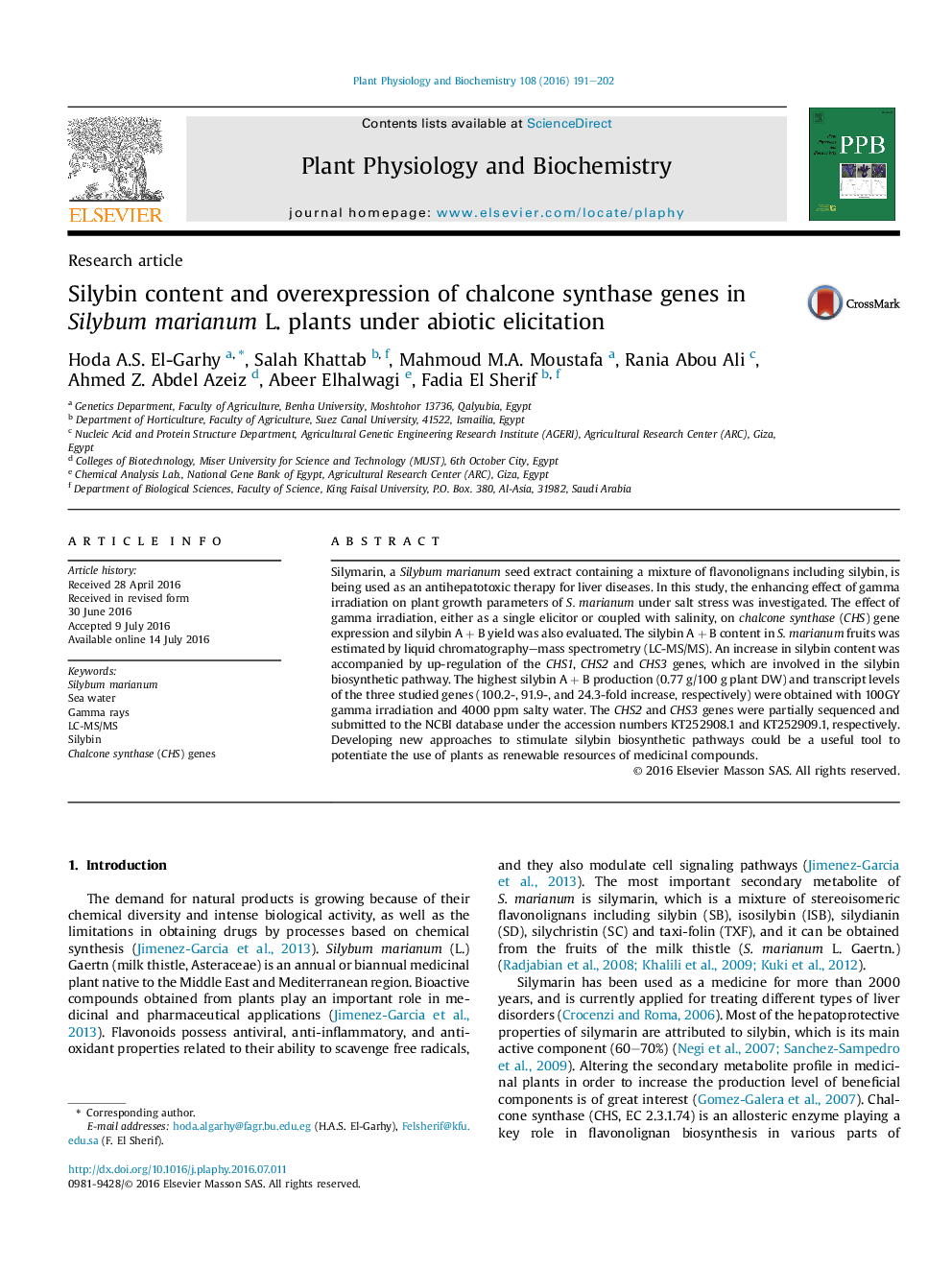| Article ID | Journal | Published Year | Pages | File Type |
|---|---|---|---|---|
| 2014706 | Plant Physiology and Biochemistry | 2016 | 12 Pages |
•Gamma irradiation enhanced S. marianum growth parameters under salinity.•Both abiotic stresses strongly increased expression of chalcone synthase genes.•Both elicitors, irradiation and salinity, increased silybin A + B content in fruits.•The highest CHS gene transcripts and silybin A + B content were under 4000 ppm/100 GY.
Silymarin, a Silybum marianum seed extract containing a mixture of flavonolignans including silybin, is being used as an antihepatotoxic therapy for liver diseases. In this study, the enhancing effect of gamma irradiation on plant growth parameters of S. marianum under salt stress was investigated. The effect of gamma irradiation, either as a single elicitor or coupled with salinity, on chalcone synthase (CHS) gene expression and silybin A + B yield was also evaluated. The silybin A + B content in S. marianum fruits was estimated by liquid chromatography–mass spectrometry (LC-MS/MS). An increase in silybin content was accompanied by up-regulation of the CHS1, CHS2 and CHS3 genes, which are involved in the silybin biosynthetic pathway. The highest silybin A + B production (0.77 g/100 g plant DW) and transcript levels of the three studied genes (100.2-, 91.9-, and 24.3-fold increase, respectively) were obtained with 100GY gamma irradiation and 4000 ppm salty water. The CHS2 and CHS3 genes were partially sequenced and submitted to the NCBI database under the accession numbers KT252908.1 and KT252909.1, respectively. Developing new approaches to stimulate silybin biosynthetic pathways could be a useful tool to potentiate the use of plants as renewable resources of medicinal compounds.
